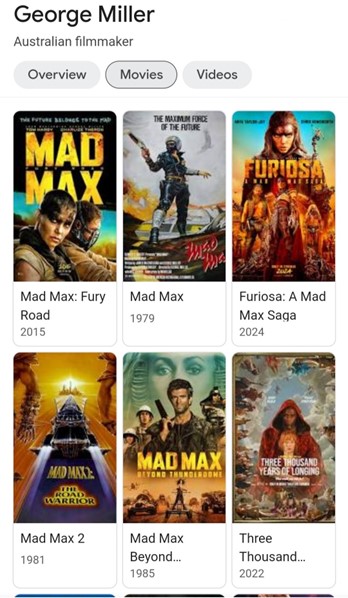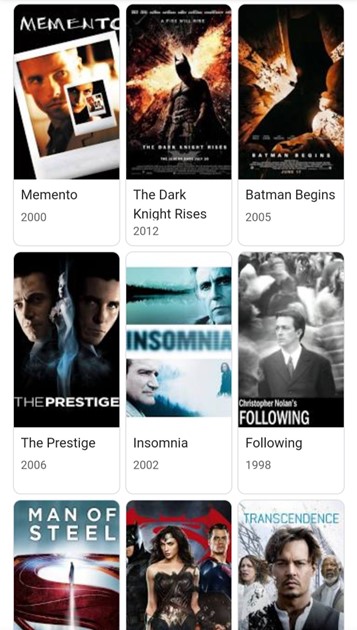From my childhood I love to watch movies and talk to my friends and discuss with them about the story behind the movies and the way of thinking of directors and writers,I’m interest to find out what is initiation of the movies so I started to make some short movies,my short movies about culture and nature and about the people.
Movie Name : I
Director : Melika Hosseini
Research
Art cinema
Art cinema, a distinct genre within the realm of film, stands as a testament to creativity, depth, and unconventional storytelling. Unlike mainstream blockbusters, art movies often prioritize artistic expression, unique narratives, and thought-provoking themes over commercial success. These films challenge conventional storytelling, embracing ambiguity, symbolism, and nuanced character development, ultimately inviting viewers into a world where emotions, aesthetics, and intellect intertwine.
Characteristics of Art Cinema:
Art cinema defies standardized storytelling structures, opting for unconventional narrative techniques. It might feature non-linear plots, open-ended conclusions, or fragmented storytelling, leaving ample room for interpretation. These films often delve into complex human emotions, societal issues, philosophical musings, or existential themes, encouraging audiences to ponder and engage on a deeper level.
One defining aspect of art cinema is its visual aesthetics. Directors in this genre employ innovative cinematography, unique framing, symbolic imagery, and rich metaphors to convey messages beyond mere dialogue. The cinematography often serves as an art form in itself, weaving a visual tapestry that evokes emotions and provokes thoughts.
Example: “The Tree of Life” (2011) directed by Terrence Malick
One exemplary illustration of art cinema is Terrence Malick’s “The Tree of Life.” This film ventures into the essence of existence, exploring human life, spirituality, and the universe’s mysteries. Through stunning visuals, poetic narration, and a non-linear storytelling approach, Malick creates a mesmerizing experience that transcends the traditional boundaries of cinema.
The film juxtaposes the story of a Texas family in the 1950s with cosmic imagery, showcasing the grandeur of the universe. It delves into the complexities of life, human relationships, and the quest for meaning, inviting viewers to contemplate existence and our place within it. Through breathtaking cinematography and evocative symbolism, Malick crafts a deeply introspective and visually captivating narrative that resonates long after the credits roll.
Impact and Significance:
Art cinema contributes significantly to the cinematic landscape by pushing boundaries and challenging the audience’s perceptions. It encourages viewers to appreciate film as an art form, transcending entertainment and delving into the realms of emotion, intellect, and philosophical exploration. These films often prompt discussions, interpretations, and personal reflections, fostering a deeper connection between the audience and the artistry behind the screen.
Conclusion:
Art cinema, with its emphasis on unconventional storytelling, visual aesthetics, and thought-provoking themes, stands as a testament to the diversity and depth of the cinematic experience. Through the example of films like “The Tree of Life,” it becomes evident that art cinema serves as a conduit for artistic expression, intellectual engagement, and emotional resonance, offering a unique and enriching journey for those seeking a more profound cinematic experience.
In the realm of art cinema, filmmakers are not mere storytellers; they are visual poets, inviting audiences to explore the complexities of life, emotions, and the human condition through the lens of artistic vision.
Martin Scorsese

Martin Scorsese, an icon in the world of cinema, stands as a visionary director whose unparalleled storytelling and unique filmmaking style have left an indelible mark on the industry. With a career spanning over five decades, Scorsese has consistently showcased his prowess in crafting compelling narratives, exploring
diverse themes, and employing distinctive directorial techniques that have redefined the art of filmmaking.
Early Career and Signature Style:
Scorsese’s early works, such as “Mean Streets” and “Taxi Driver,” introduced audiences to his distinctive directorial approach. His films often delve into the gritty realities of life, exploring themes of violence, redemption, and moral complexities within flawed characters. This signature style of storytelling, characterized by intense character studies and evocative narratives, became synonymous with Scorsese’s cinematic oeuvre.
Visual Storytelling and Cinematic Techniques:
One of Scorsese’s defining strengths lies in his mastery of visual storytelling. Through meticulous framing, inventive camera work, and striking cinematography, he creates immersive and visually compelling narratives. Scorsese’s use of long tracking shots, frenetic editing, and bold color palettes serves not only to engage audiences but also to deepen emotional connections to the stories he tells.
Moreover, his collaborations with esteemed cinematographers, such as Michael Chapman and Rodrigo Prieto, have resulted in visually arresting films that resonate on both aesthetic and emotional levels. Scorsese’s attention to detail in crafting visually stunning sequences has become a hallmark of his
directorial style.
Exploration of Themes and Genres:
Scorsese’s filmography is a testament to his versatility as a filmmaker. From crime epics like “Goodfellas” and “The Departed” to historical dramas such as “The Aviator” and “The Last Temptation of Christ,” he navigates diverse genres with finesse. His willingness to explore a wide array of themes, from organized crime to religious introspection, showcases his commitment to storytelling depth and complexity.
Furthermore, Scorsese’s collaborations with actors, notably frequent collaborator Robert De Niro and later with Leonardo DiCaprio, have resulted in some of cinema’s most memorable performances, elevating the emotional impact of his films.
Legacy and Influence:
Martin Scorsese’s impact on cinema extends far beyond his own films. His dedication to preserving and advocating for the art of filmmaking, his mentorship of emerging talents, and his contributions to film preservation initiatives highlight his commitment to the craft. Scorsese’s influence can be seen in the work of numerous filmmakers who have been inspired by his directorial techniques, thematic depth, and storytelling prowess.
Conclusion:
Martin Scorsese, with his distinctive storytelling, innovative techniques, and diverse exploration of themes, has solidified his place as a maestro of
cinematic brilliance. His films not only entertain but also provoke thought, challenge perceptions, and evoke emotional responses. Scorsese’s enduring legacy as a visionary director continues to shape the landscape of filmmaking, inspiring generations of filmmakers and captivating audiences worldwide.
Christopher Nolan

Nolan developed an interest in filmmaking from a young age. After studying English literature at University College London, he made several short films before his feature film debut with Following (1998). Nolan gained international recognition with his second film, Memento (2000), and
transitioned into studio filmmaking with Insomnia (2002). He became a high-profile director with The Dark Knight trilogy (2005–2012), and found further success with The Prestige (2006), Inception (2010), Interstellar (2014), and Dunkirk (2017). After the release of Tenet (2020), Nolan parted ways with longtime distributor Warner Bros. Pictures, and signed with Universal Pictures for the biographical thriller Oppenheimer (2023), which won him Academy Awards for Best Director and Best Picture.
Nolan’s work regularly features in the listings of best films of their respective decades. Infused with a metaphysical outlook, his films thematise epistemology, existentialism, ethics, the construction of time, and the
malleable nature of memory and personal identity. They feature mathematically inspired images and concepts, unconventional narrative structures, practical special effects, experimental soundscapes, large-format film photography, and materialistic perspectives. He has co-written several of his films with his brother, Jonathan, and runs the production company Syncopy Inc. with his wife, Emma Thomas.
George Miller

George Miller, the acclaimed Australian filmmaker, has left an indelible mark on cinema with his versatile storytelling, innovative techniques, and a distinctive directorial style. Renowned for his diverse filmography, Miller’s ability to seamlessly
transition between genres while maintaining a unique signature style sets him apart as a visionary in the realm of filmmaking.
Early Career and Signature Style:
Miller’s career began with the groundbreaking “Mad Max” franchise in the late 1970s. These films not only redefined the action genre but also introduced audiences to Miller’s trademark directorial approach characterized by dynamic visuals, intense action sequences, and an unparalleled sense of kinetic energy. His ability to craft adrenaline-pumping scenes while infusing depth into characters set the stage for his future successes.
Visual Storytelling and Cinematic
Techniques:
One of Miller’s standout attributes is his mastery of visual storytelling. He expertly employs visual cues, dynamic camera movements, and vivid imagery to convey emotions, narrative nuances, and thematic depth. His use of striking cinematography and meticulous attention to detail immerse audiences in the worlds he creates, elevating the cinematic experience.
In addition, Miller’s distinctive editing style, particularly in action sequences, is a testament to his directorial prowess. He intricately choreographs scenes, utilizing rapid cuts and precise pacing to amplify tension and deliver breathtaking sequences that resonate with viewers long after the credits roll.
Diversity in Genre and Unconventional Narratives:
Miller’s directorial versatility extends beyond action-packed blockbusters. He deftly explores various genres, demonstrating his ability to craft compelling narratives across different thematic landscapes. From the dystopian wastelands of the “Mad Max” series to the heartwarming and visually stunning “Happy Feet,” Miller showcases a diverse range of storytelling capabilities.
Moreover, his willingness to embrace unconventional narratives and challenge cinematic norms is evident in films like “Mad Max: Fury Road.” This installment, praised for its feminist themes and immersive storytelling, defies traditional
action movie conventions, placing strong female characters at the forefront while delivering a relentless and visually stunning narrative.
Legacy and Impact:
George Miller’s impact on cinema goes beyond his individual films. His innovative techniques, narrative boldness, and commitment to pushing cinematic boundaries have influenced a new generation of filmmakers. Miller’s ability to blend spectacle with substance has set a standard for storytelling that resonates with audiences seeking both entertainment and depth in cinema.
Conclusion:
George Miller’s multifaceted career and
distinctive style of filmmaking have cemented his position as a cinematic visionary. His ability to craft visually stunning narratives across genres while infusing depth and originality into storytelling exemplifies his directorial genius. With each film, Miller continues to captivate audiences, leaving an enduring legacy that enriches the art of filmmaking



This painting is taken from a movie that is full of symbols and words about women, resistance and salvation in terms of framing and imagery. A film without dialogue that speaks to the image and is excellent in terms of editing, but there are parts of the film that are whistling, of course, I watched this film 58 times myself and every time I enjoyed all the ideas behind this film.
I took the idea of the painting from this movie
The name of art work ; redemption
Oil color





